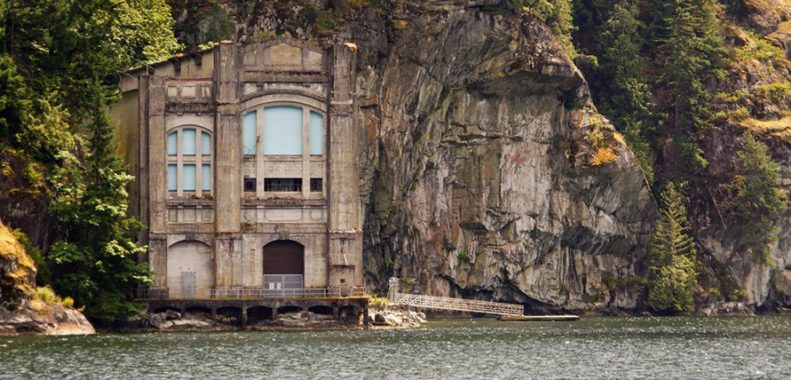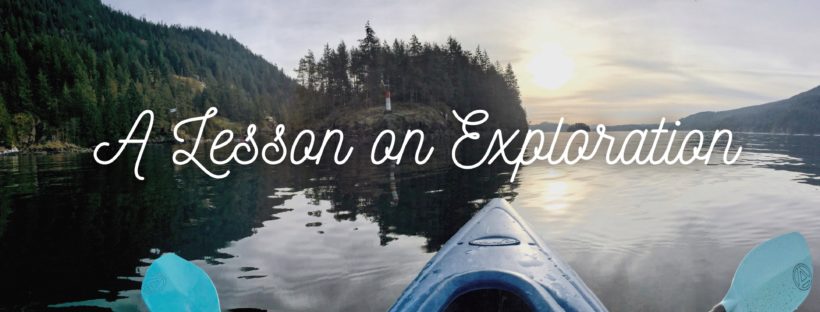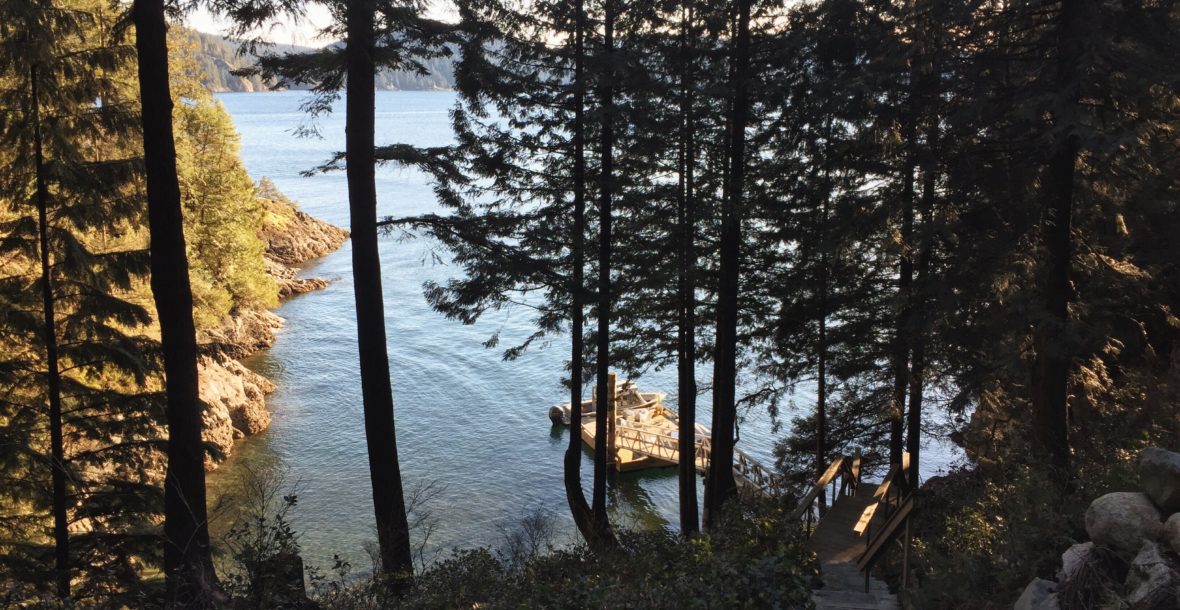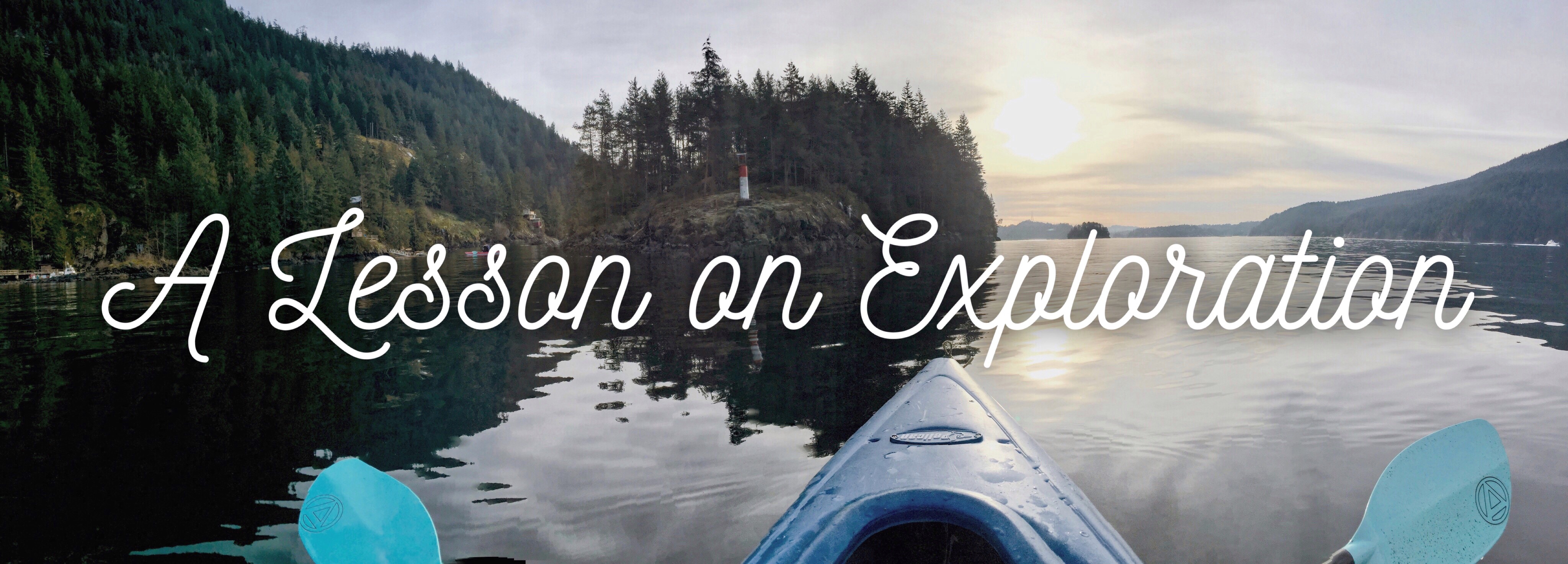“A ship is safe in harbor. But then again that’s not what ships are for.”
—Admiral Grace Hopper
So far in 2017 I have escaped to Canada three times. Retreating from the loony American politics and the gloomy Seattle weather, a few close friends and I have gone to a little cabin north of Vancouver, located in a mountain-rimmed fjord. It’s only accessibly by boat, so there are no cars making noise or people walking around. Just the sea, mountains, and us—in a word: perfection.
Most of our mornings were spent blissfully caffeinated with a cozy fire at our backs, marveling at the view outside. However, one morning I decided to not just gaze at the mountains and sea, but to get in the midst of them on a kayaking trip to the northern part of the inlet with our Canadian friend, James. The water was abnormally choppy that day as the wind had kicked up, but we were determined to at least give it a try. So I dressed in layers, grabbed a life jacket, and met James at the dock.
The start of our journey was effortless as we kayaked out of the cabin’s sheltered cove. However, once we got beyond the protective rocks we were hit full force with wind gusts and waves. The water was almost indistinguishable from its usual glassy calm. For over an hour we hugged the cliffs along the edge of the fjord in an attempt to avoid the brunt force of the wind. Though eventually we had two options, either cross open water to reach the other shore or to turn back.
A beautiful and old abandoned power station from the early 1900’s sat on the other side. I had been itching to visit it since my first trip to the area and it taunted me, as if waiting to be explored. So after checking our energy levels (and gumption), we decided to make the most dangerous part of our journey. We would cut across the wind and waves, all coming at us sideways, to reach the power station.

While the other photos are mine, I snagged this one from google because I couldn’t stop to take a picture from the water.
Though the sky was blue and cloudless, it was bitterly cold and the wind relentless. The sea was so riled-up that 2-3ft tall waves slammed against our kayaks as soon as we abandoned the safety of the rocks. Those waves might not sound large, but try sitting half submerged in a little plastic tube sometime, with nothing but the lip of a kayak to keep water from leaping a few inches up and over that ledge and inside with you.
It didn’t help that after we hit the first few whitecaps James called to me across the waves, “You know, we would only last about five minutes in the water at this temperature… so don’t fall in!”
Real comforting, James. Especially when every incoming wave is a non-stop battle to keep your kayak right-side-up.
Trepidation in my heart or not, I had decided to go through with this and I certainly wasn’t about to back down now. Stubbornness: 1, Caution: 0, and so we continued. The wind bit at my skin and each crashing wave sprayed me with water in a struggle to yank my kayak off-course. And yet it was there, between the wave troughs and peaks that could toss me into freezing water, that something stirred inside my heart. I knew in that moment that a greater truth was trying to capture my attention. And as I focused on that quiet voice in my soul with renewed clarity, I realized this journey was offering me a glimpse into how God leads us.
I believe wholeheartedly that we follow a God who sends us out on great adventures. He gives us a dream to start, and it may be something as vague as kayaking out of our little sea cove and turning north. But as we begin our journey He reveals something worth fighting for—even if it’s far off in the distance. Sometimes the path before us is as smooth as silk, but other times it can be fraught with waves that threaten to sink us. When God stirs our hearts to reach that other side, He doesn’t promise us a journey without danger. We can still take on water, curse in frustration as the waves try to yank us off course, or worse, toss us into the sea. Yet these problems don’t necessarily mean we’re on the wrong path. They might just mean the course we have chosen is one worth fighting for.
An hour later the waves began to subside and the sea relinquished its hold on my kayak. Thank God, because I was exhausted. Once James and I slipped into the shadow of the mountain on the inlet’s opposite shore the change in the sea was instantaneous, from chaos to calm.
As we skirted around the rocky bend from shade to sunshine, something rippled in the water before us. My eyes took a moment to adjust, and then I saw the gleaming head and body of a seal only 10-feet away. It peered at us curiously before smoothly slipping under water as we approached. Finally, with one last turn along the rocks, we were met with the faded baroque architecture of the power station and the massive stones at its base that gently sloped into the water—all bathed in glorious sunshine and protected from the wind.
We laid out our jackets to dry in the warm sun as we shared a lunch of muffins, apples, and a thermos of gloriously hot tea. If you doubted how truly Canadian this moment was, we even had a little tub of maple syrup to sweeten the tea. Seriously.
On the heels of our struggle to reach this point, I can hardly describe how wonderful it felt to sit in peace and gaze over this view of the Canadian wilderness; one we had fought so hard reach. The sun danced along the water’s surface, the trees bowed over the cliffs as if to catch their beauty reflected in the sea below, and the water was so clear near the shore that you could see the pebbled sea floor. We sat and talked for nearly an hour, and even when we didn’t speak there was a comfortable silence, won only after a hard battle faced in community. Eventually the opposite shore called us home and we said goodbye to what now felt like our powerhouse.
Like that famous rule, “what goes up… must come down,” we learned that “kayakers who go across a stormy inlet… must return.” Though it was every bit as dangerous, wave-ridden, and difficult to paddle our little kayaks, for some reason the journey back didn’t seem as difficult. Perhaps it was because we had done it once before and had proven to ourselves the strength we didn’t know we had.
We fought the wind and the waves one last time before reaching the cabin’s safe little cove relatively dry, four hours after we had begun. I hadn’t realized it before, but that cabin’s cove was truly a gift with its smooth-as-glass water compared to the chaos we had experienced.
Upon returning to the dock, I looked out on the cove and the choppy sea beyond, and that quiet voice stirred again in my heart as if to say,
“Look at where I’ve taken you. Look at how much strength you have. I didn’t reveal the entire plan at the start, but with unstoppable faith you kept pushing for more—and now look at how far you’ve come.”
Love this post?


